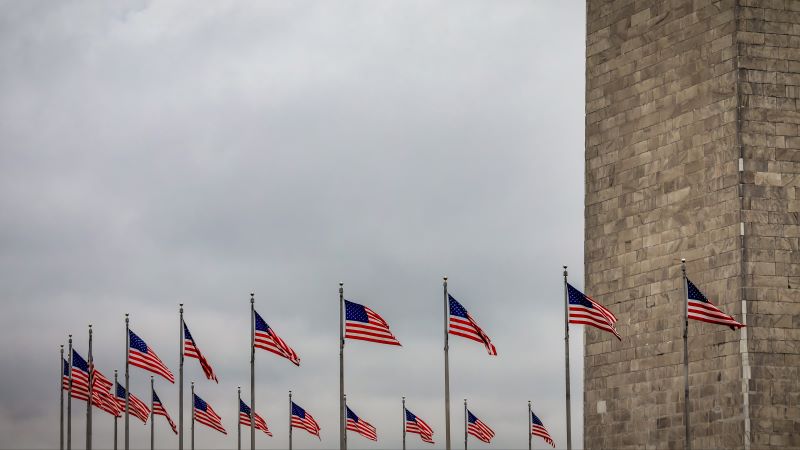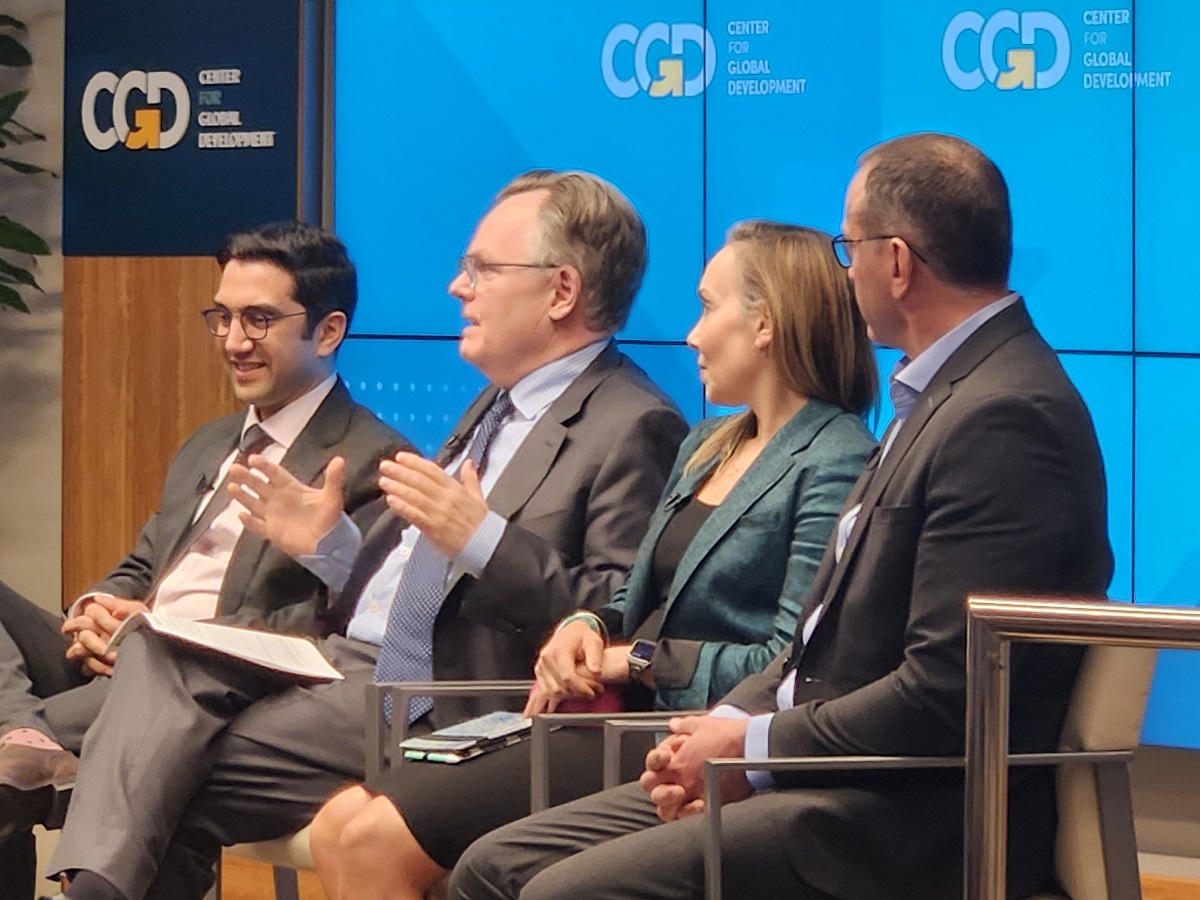I was inspired by the November 29 CGD event on women’s leadership at the international financial institutions (IFIs), featuring a presentation of the results of this data-based study by CGD colleagues, covering seven IFIs, and including two all-female sets of six distinguished panelists (a fine summary of their key points by my colleague Eeshani Kandpal can be found here).
I was inspired by what felt to me like a huge amount of progress in appointments of women to senior positions in the IFIs—until I realized that it’s been 25 years since I worked at an IFI and yet women still represent only about 30 percent of senior management in these institutions. Worse, almost none of the world’s major multilateral banks has had a female president in all that time.
When will a woman become president of the World Bank, or secretary-general of the United Nations for that matter? (The evidence from the study is that for these political appointments, and for the boards of the multilateral banks and of the IMF, the representation of women is even worse than for the institutionally based appointments.)
One notable datum is the jump from 18 to 36 percent of female senior managers at the IMF since 2015, starting around the time when Kristalina Georgieva became the managing director. Brava to Georgieva. In contrast, during Jim Kim’s presidency of the World Bank, female representation in senior management barely grew on net (3 percent), rising but then falling over the course of a tumultuous reorganization.
Note that the appointment of the managing director of the IMF is controlled by the Europeans, and of the president of the World Bank by the US. Is it a coincidence that the IMF has had two impressive women as managing director, while the World Bank has yet to have any woman as president? Perhaps it is because in the case of the IMF, the European countries compete among themselves in the (highly politicized) nomination process, while in the case of the World Bank, there is no such competition; the nomination comes from the White House, and is then backed by the unanswerable economic and diplomatic power of the US.
Asking myself: How did I get ahead at the World Bank?
The panelists’ remarks got me thinking about why and how I got ahead in the male-dominated bureaucracy at the World Bank, from junior economist when I started in 1979 to director of the Policy Research Department in 1989. (I left in 1993 to become executive vice-president of the Inter-American Development Bank—a rare political appointment for a woman at the time.)
- I “got ahead” by getting around the centralized system of promotions. When Chief Economist Anne Krueger asked me in late 1982 to head the 1984 World Development Report on population, I was a junior economist. (Is it a coincidence that she was a woman herself? She was the second chief economist appointed, but the only female chief economist until the appointment of Penny Goldberg 32 years later.) When she offered me the job, she explained that she might not be allowed to appoint me, because I was not on a list of staff eligible for the job (I had never been a country director, for example, and not even a division chief. I learned later that Krueger got my name from her former colleague at the University of Minnesota, Paul Schultz, known for his research on population; Schultz had been my dissertation adviser at Yale.) Lucky for me that she asked my dissertation adviser, and lucky for me that she got her way. When Chief Economist Larry Summers, five years later, asked me to become head of the Policy Research Department, he also explained that he might not be able to appoint me, because I was not on the list of staff eligible for the job. Luckily for me, he got his way too.
I got two big opportunities because two high-level non-insiders were willing and able to buck the “system.”
But most women are not so lucky. The “managers” they usually encounter are not chief economists with the seniority and the independence to buck the system. Panelists at the CGD event emphasized that the IFIs’ centralized systems of hiring and promotion tend to reflect society’s longstanding biases, including the “boys’ club who-you-know” syndrome, and need to be monitored and measured against a higher standard (including, they would surely agree, via regular independent assessments of the kind CGD has done).
- I got ahead because I like doing research and especially policy research, so I struggled less than most women in reconciling the demands (and delights) of work and family by minimizing travel. But most women in the IFIs are there because they are committed to the critical, mainstream operational work of these institutions, which involves a lot of travel—children or not. Also, by the time I decided to try a job in operations, I could choose among options (at the time of a major reorganization in 1987). I had the option to work in the Latin America region—now apparently called the “mommy” region (!)—where trips are shorter and jet lag is not an issue. And by that point I had already been a division chief, and division chiefs in operations are able to take fewer and shorter trips than their own staff.
At the CGD event, one of the panelists referred to the expectation at the World Bank that staff members should have a stint in a country office overseas before becoming a manager. That is unfortunate. It creates an obvious disadvantage for most married women, given that male compared to female spouses are less willing and able to live and work overseas. I didn’t need to have worked in an office overseas to become a successful division chief and a successful head of the Policy Research Department.
- I got ahead because I had chutzpah. One of the panelists counselled that women can and should be authentic and assertive—a good alliteration which means to me that women honor themselves when they speak up for themselves.
Perhaps it was chutzpah at work when I complained to my department director (politely, no doubt) about not being promoted from junior to senior economist after heading the WDR team (all male members of which had higher rank and salaries than I did!). Thanks I believe to the intervention of Ernest Stern (then the top deputy to the president, whom I had worked for as a research assistant in his and my pre-bank days), I was then promoted to a division chief position heading a policy division (on population, health and nutrition—appropriate since the 1984 WDR was on population). It was chutzpah for me to ask for a couple of days to think about it when President Conable called me to ask me to join the small team to design that 1987 reorganization; I was worried about having two toddlers at home. Colleagues were horrified that I didn’t say yes instantly. It was chutzpah when I asked for a short leave to learn about environmental policy issues when the then vice-president of the LAC region was pushing me to take on the division chief position on environment in that region (he wanted an economist to manage the “green team” in the division at the time); I got a two-month leave. Thanks to that job, I ended up accompanying then Chief Economist Larry Summers to see the Amazon; he later promoted me to director of the Policy Research Department. Perhaps it was chutzpah for me to get the name of what had been the Country Policy Department changed to the Policy Research Department—that was easy though I couldn’t be sure it would be.
Times have changed. Women should not need chutzpah to get ahead at the World Bank and other international institutions nowadays!
- I got ahead because I married the right man. My second marriage was to a man six years younger than I am—just enough younger to have become an adult well into the years of the second wave of women’s liberation in the late 1960s/early 1970s. When I wondered whether to go ahead and take the opportunity to head the WDR, he said he would quit his job and combine childcare with going to law school at night, which he did. (He later “got ahead” too. Ruth Bader Ginsburg liked that he had stayed home with our daughter, and so he ended up clerking for her at the Supreme Court.)
- I got ahead because it was easier to find terrific immigrant women to provide childcare in the United States in the decade following the 1986 bipartisan immigration legislation (which legalized all undocumented immigrants who had entered the United States prior to 1982). Only in 2000 did the World Bank childcare center open, though women had started the campaign that led to its creation at least a decade earlier.
A bottom line
My colleague Eeshani asked the panelists to name the one thing they would change so that women across the world can reach their full potential. My answer (see 4 and 5 above) is that men across the world seize equal responsibility in “care”: in the household and in childcare, and in care of the sick and the elderly, so that all people have the opportunity to reach their full potential—at home and at work, as I have had.
Disclaimer
CGD blog posts reflect the views of the authors, drawing on prior research and experience in their areas of expertise. CGD is a nonpartisan, independent organization and does not take institutional positions.







